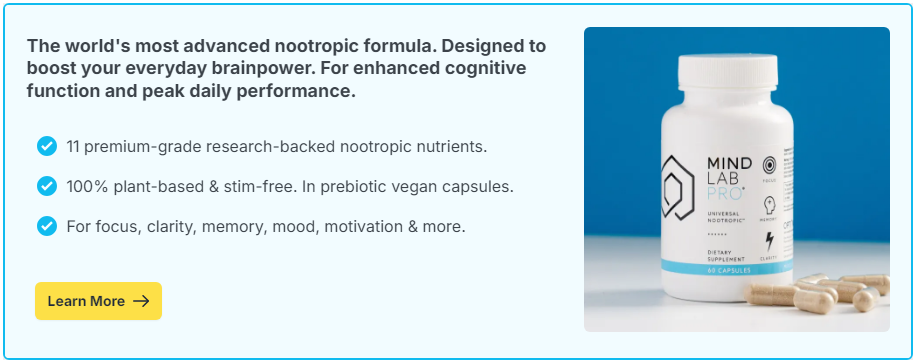
Artificial intelligence can write poems, compose music, and design artwork in seconds. For many people, this sparks a fear: if machines can create, will human creativity become irrelevant? The short answer is no. AI can generate patterns and mimic styles, but it cannot truly imagine, dream, or feel. Creativity is more than clever remixing – it’s originality, emotion, and meaning. The good news is that creativity isn’t fixed; it can be trained. By exercising and optimizing your brain, you can ensure your creative edge remains sharp, even as AI grows more powerful.
Contents
AI’s Version of Creativity
AI creativity is impressive at first glance. Ask an algorithm to paint like Monet or write a sonnet in the style of Shakespeare, and it delivers something convincing. But under the hood, it’s not inventing. It’s recombining what it has already learned from massive datasets. That’s useful, but it’s not the same as human originality.
Pattern Recognition at Scale
AI can process thousands of images or texts, recognize common patterns, and generate outputs that reflect those patterns. This is why AI can create realistic art or music so quickly – it has a huge library to draw from. But everything it produces is bounded by what already exists.
The Missing Spark
AI does not wake up with an idea in the shower, nor does it feel the rush of inspiration after heartbreak. It cannot break free of its training data. What looks like originality is really sophisticated imitation.
The Human Edge in Creativity
Humans have qualities that no algorithm can replicate. Emotion, curiosity, and imagination give human creativity its depth and resonance. These qualities ensure that our work is not only original but meaningful.
Emotion-Driven Art
A love song written by someone who has truly felt heartbreak resonates in a way no AI-generated song ever can. Listeners sense the authenticity of human experience behind the words. Emotion makes creativity relatable and powerful.
The Role of Curiosity
Humans constantly ask “what if?” – a question AI cannot truly pose. Curiosity leads to experiments, failures, and breakthroughs. This openness to the unknown drives innovation beyond predictable patterns.
Imagination Beyond Data
AI cannot imagine something that has never been recorded in its dataset. Humans can. We invent entirely new genres, ideas, and worlds. Science fiction, surreal art, and abstract philosophy are products of imagination, not probability.
Training the Creative Brain
While some people are naturally more creative, everyone can strengthen their creativity with training. Just like muscles respond to exercise, neurons grow stronger with practice and stimulation. Brain optimization is the foundation for creative growth.
Expose Yourself to Novelty
Creativity thrives on variety. Read books in unfamiliar genres, travel to new places, or learn a skill outside your comfort zone. Each new experience builds fresh connections in the brain, fueling new ideas.
Practice Divergent Thinking
Divergent thinking is the ability to generate many solutions to a single problem. Practicing brainstorming sessions without judgment, or challenging yourself to list 20 uses for a paperclip, strengthens this skill and enhances creativity.
Engage in Cross-Training
Just as athletes cross-train in different sports, creative thinkers benefit from crossing fields. A scientist who paints or a musician who codes strengthens the brain’s flexibility, leading to unexpected creative breakthroughs.
Use Constraints to Spark Ideas
Paradoxically, limitations fuel creativity. Setting boundaries – like writing a story in 100 words or painting with only two colors – forces the brain to innovate within constraints.
The Role of Brain Optimization
Training creativity is easier when the brain is optimized. Creativity demands energy, focus, and resilience. Without proper care, fatigue and stress can stifle imagination.
Fuel for Creativity
- Nutrition: Foods rich in omega-3s, antioxidants, and vitamins provide the building blocks for neuron health.
- Exercise: Physical activity increases blood flow and stimulates chemicals linked to creativity.
- Sleep: Rest is when the brain makes unusual connections, often leading to those “aha” moments.
Mindfulness and Relaxation
Creativity often appears when the mind is relaxed. Mindfulness practices reduce stress and open mental space for new ideas. Even daydreaming, often dismissed as wasting time, fuels imaginative leaps.
Brain Supplements
Some creators use nootropics to support focus, energy, and memory. While they don’t generate ideas themselves, they provide the brain with resources to think more clearly and sustain creative effort longer.
Case Studies: Human Creativity With AI
Writers
Authors now use AI to generate drafts or spark ideas. But the true story emerges when a human edits, adds emotion, and weaves in meaning. AI accelerates the process, but the heart of storytelling remains human.
Artists
Visual artists experiment with AI-generated images, but it is their curation and vision that transform outputs into art. They choose what resonates emotionally, adding a human fingerprint no machine can duplicate.
Entrepreneurs
Innovators use AI to test business models or analyze data. But the initial spark – the idea to solve a problem in a novel way – comes from human imagination. Creativity remains the wellspring of entrepreneurship.
AI as a Creative Partner, Not a Rival
Rather than seeing AI as a threat to creativity, many thinkers now view it as a partner. AI can provide raw material, speed, and efficiency, but humans shape the final product. When creativity is trained and supported, AI becomes a tool rather than a replacement.
AI may create impressive imitations, but it cannot replace human creativity. The spark of imagination, fueled by emotion, curiosity, and meaning, remains uniquely ours. By training the brain and nurturing creativity through novelty, practice, and optimization, we ensure that humans will continue to lead in originality. Machines may calculate, but only humans create with heart. In the AI age, creativity is not endangered – it is more essential than ever.

